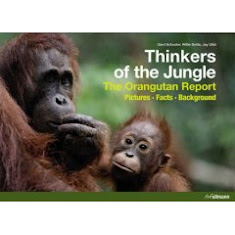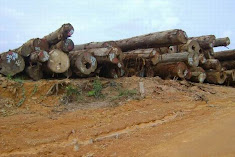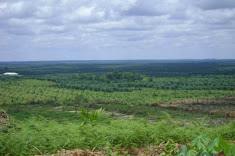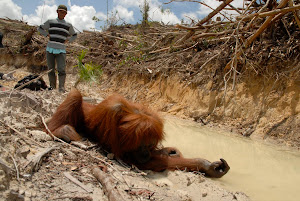Published: Monday November 2, 2009 MYT 3:15:00 PM
By SHARON LING
KUCHING: Sarawak hopes to gradually increase its wild orangutan population through various conservation efforts and with a balanced approach to development.
State forestry director Datuk Len Talif Salleh said there were currently about 2,500 orangutan in the wild in Sarawak.
“What is important is that the figure has been stable for a number of years. This means that our efforts have been successul in stabilising the orangutan population.
“In fact, we want to increase the population to three, four or even five thousand in the years to come,” he told reporters at a regional symposium on orangutan conservation here on Monday.
The three-day symposium is aimed at gathering views and recommendations from experts and stakeholders on developing an “orangutan strategic management plan” for Sarawak. It was opened by Second Minister of Planning and Resource Management Datuk Awang Tengah Ali Hasan.
Len said greater public awareness on the need to protect orangutan had contributed to the state’s conservation efforts.
He cited the example of a member of the public who recently handed over a baby orangutan to the Matang Wildlife Centre after rescuing it from captivity as a pet.
In addition, he said that the Ibans considered it a taboo to kill orangutans.
This was because, according to Iban legend, the orangutan was the saviour of the community by helping the people chase away their enemies, he said.
Len also said orangutan were only found in Maludam, the Lanjak Entimau Wildlife Sanctuary and Batang Ai National Park and not throughout the whole state.
As such, he said the state practised a clear land-use policy whereby certain areas were earmarked for economic development and others for conservation.
“It doesn’t mean that in the pursuit of economic development, we are destroying the whole area of the state,” he said.
Meanwhile keynote speaker Dr Birute Mary Galdikas said deforestation and habitat destruction were the main threats facing the orangutan.
She said the clearing of jungle for oil palm plantations was the primary cause of habitat destruction in Kalimantan Tengah, which she described as the “orangutan capital of the world” and where she has studied and worked in for 38 years.
“There are approximately 30,000 orangutan in Kalimantan Tengah, including about 6,000 each in the Sebangau and Tanjung Puting national parks.
“Threats such as poaching and illegal logging are major problems, but nothing compares to oil palm.
“The main way to clear land for oil palm plantations is fire, which not only destroys habitat but messes up the fruiting cycle, so if the orangutans survive the fire they will have nothing to eat,” she said.
Dr Galdikas said oil palm developers should leave part of the forest untouched when clearing land for plantations, which would be sufficient for orangutan to live in.
“Don’t totally clear the forest. The orangutan can survive in fragments of forest, so leave them a bit of it.
“And secondly don’t kill the orangutan. If we eliminate these two things, the orangutans will survive,” she said.
http://thestar.com.my/news/story.asp?file=/2009/11/2/nation/20091102151904&sec=nation























-a.jpg)
